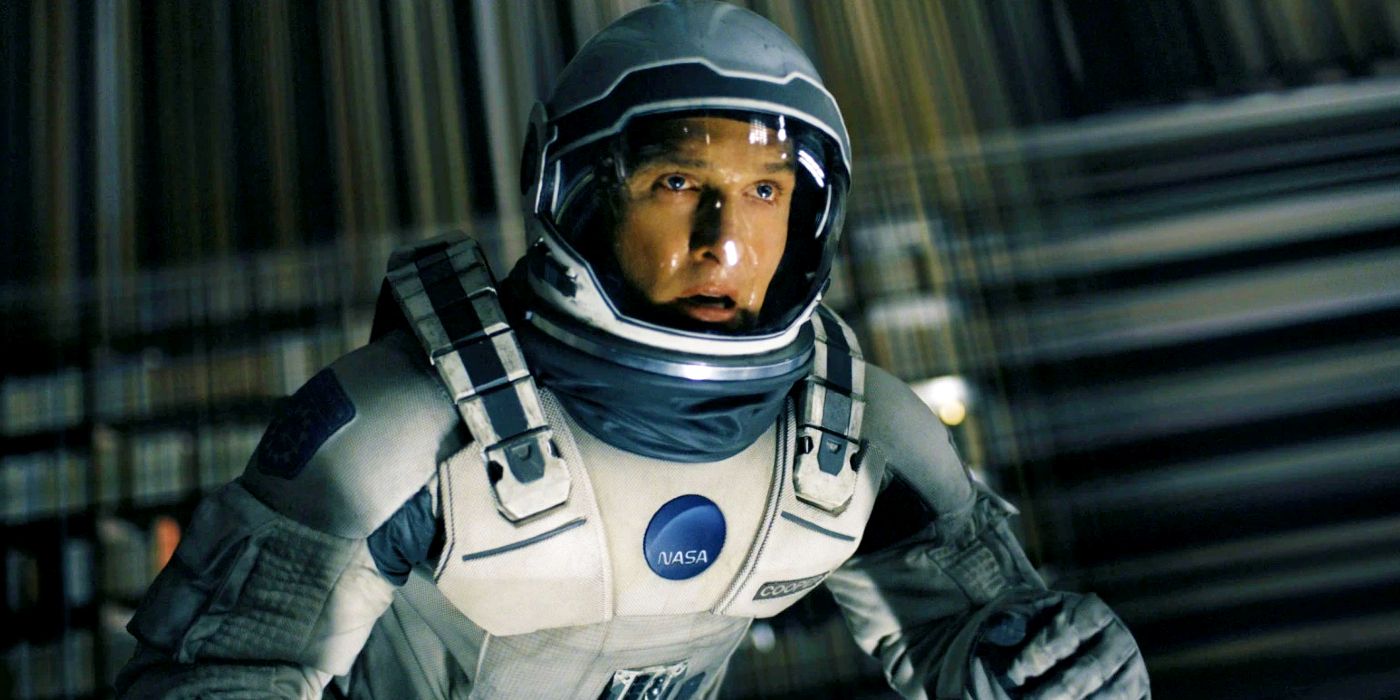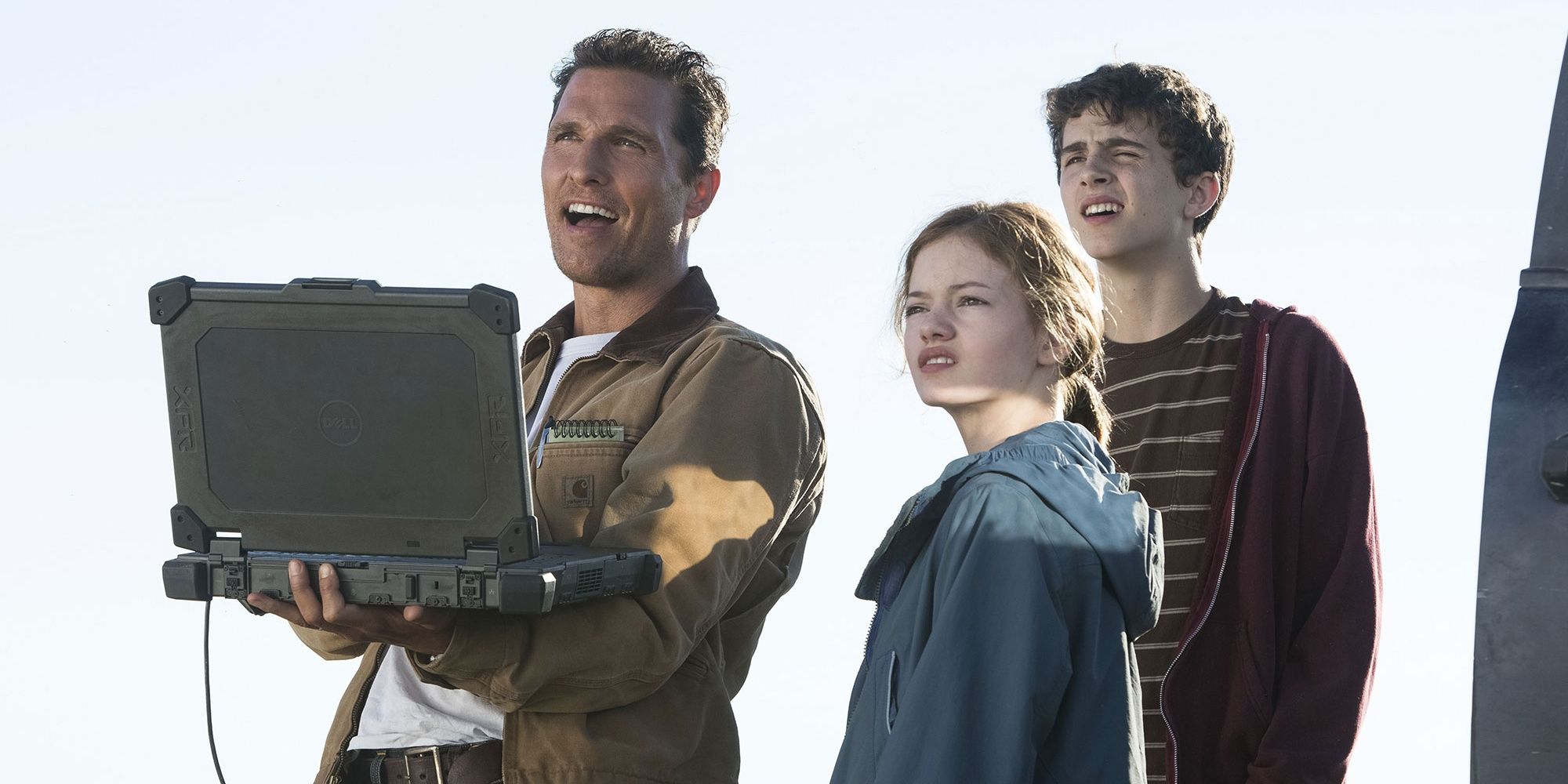In Interstellar, Cooper’s fall into the Tesseract proves he was the one sending Murph the coordinates, but one theory suggests that when he bounced on the walls, he also caused every other anomaly at the beginning of the movie. The most significant reveal in Christopher Nolan's sci-fi movie comes when Cooper (Matthew McConaughey) falls into the black hole, with his body continually hitting the walls of the Tesseract on his way down. Cooper stops and realizes that he can manipulate the walls to create gravitational anomalies and communicate with Murph back in time, explaining that he was her “ghost” all along.
Interstellar’s Tesseract, a five-dimensional structure that can perceive any moment in the past, present, and future, becomes the means by which Cooper can send Murph the coordinates and black hole data to NASA to save humanity. After Cooper has already bounced on its walls, unknowingly knocking the shelves and causing gravitational anomalies, he stops at a specific moment in the past that allows him to purposefully manipulate gravity to communicate with his young daughter, Murph. However, Cooper’s purposeful manipulation isn’t the first unexplained gravitational anomaly from Interstellar’s opening act, as several mysterious occurrences take place before Murph receives the “ghost" coordinates.
According to a theory by Reddit user marsmedia, every time that Cooper accidentally bangs into the Tesseract’s bookshelves while falling, he causes Interstellar’s early anomalies, with each hit occurring at different points in time. The first bounce would have knocked off the book that first cued Murph onto the "ghost" before the events of Interstellar, as she mentions that it had already been knocking books off of her shelf before breaking the lander toy at the beginning of the movie. The theory then poses that Cooper’s second bookshelf hit, which would have correlated to a slightly later point in time, created the gravitational anomaly that attracted the unexplained drone from New Delhi. The third time Cooper hits the Tesseract walls in Interstellar, he inadvertently created an anomaly that disrupted the GPS and compasses of the combines, which inexplicably drew them to a gravitational pull at the house. After this hit, Cooper stops falling and uses the Tesseract’s powers purposefully in order to send Murph messages.
Although these gravitational anomalies are never explicitly explained in Interstellar, the theory makes complete sense. Cooper has no explanation for why the drone from India would come so low to the Earth’s surface, or why it ventures so close to his farm and family. Similarly, Donald has no answer for why the combines on the farm have a glitch with their compasses, or why it would bring them toward the house. Murph’s book falling already makes sense as an action by Cooper in Interstellar's black hole, but this theory is helpful in giving a clearer explanation of the other mysterious occurrences at the beginning of the movie.
While it’s also suggested that the bulk beings from the Tesseract had caused gravitational anomalies beforehand to communicate with NASA, this Interstellar theory better explains why the events at the beginning of the movie are centered around Coop’s house. Since the bulk beings didn’t know how to locate a point of reference in time, it wasn’t until they taught Cooper how to use time as a physical space with gravity as a source of communication to give a meaningful message. Every bump from Cooper on the way down was an accident that still led the past version of him to question the odd gravitational occurrences from Christopher Nolan's time-obsessed movie that Murph had been investigating at home, even before he knew how to use it to help Interstellar’s future Murph.


